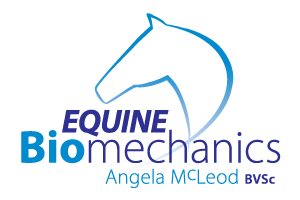Adapted from a German article in Dressur Studien
Draw reins, Chambons, Market Harboroughs etc are devices
used to ‘show the horse the way to the ground’, to help him raise his back and
thereby avoid harmful postures – this is the argument posed by the many
advocates.
But what are the risks and side effects of their improper
use? From a veterinarians perspective…
Gadgets CAUSE DAMAGE: Tension in the neck and back,
‘rein-lameness’, arthritis in the cervical (neck) vertebrae, inflammation in
the poll, teeth problems, the list goes on.
The common opinion that draw reins always put a horse in the
correct posture is quite wrong.
Quite to the contrary, they impede or inhibit the back being
raised correctly and prevent the hindlimbs from stepping under well. Instead of
showing the horse the correct ‘forwards, downwards’ posture required to raise
the back, draw reins produce a ‘backwards, downwards’ posture often clearly
behind the vertical. This overstretches the whole topline.
When these muscles are overstretched, they will wear out,
especially when they are not given a break.
This begins a vicious cycle:
When a muscle is contracted, it needs oxygen. If it is
overstretched there is an oxygen deficit. The muscle soon starts anaerobic
metabolism leading to a build up of lactic acid. The muscle becomes stiff and
painful.
To escape the pain, the horse tries to rest these muscles
thereby taking up a faulty hollow position.
The long back muscle, M. longissimus dorsi that runs on the
right and left sides of the vertebral column, is one of the most important
muscles to strengthen up with ridden training. This muscle is integrally
connected to the croup muscles which pull the hindlimb underneath the body.
The logical consequence of this muscular interconnection –
the long back muscle must stretch so that the hindleg can step under the centre
of gravity. If the rider keeps the horse behind the vertical with gadgets, or
it is not able to stretch out and relax for a long time, the muscle is
overloaded and becomes cramped – the hindlimb can no longer step underneath.
Worse still, continuous muscle pain causes the horse to escape by pushing the
back away – he goes hollow, the opposite effect to what the rider is attempting
to achieve with draw reins.
When the horse is ridden with this continuous tension
longterm the muscle atrophies (reduces in size). This happens when the muscle
hurts so much that the horse relieves it by recruiting other muscle groups.
These muscles will also become overstrained completing the vicious cycle of
pain and tension.
